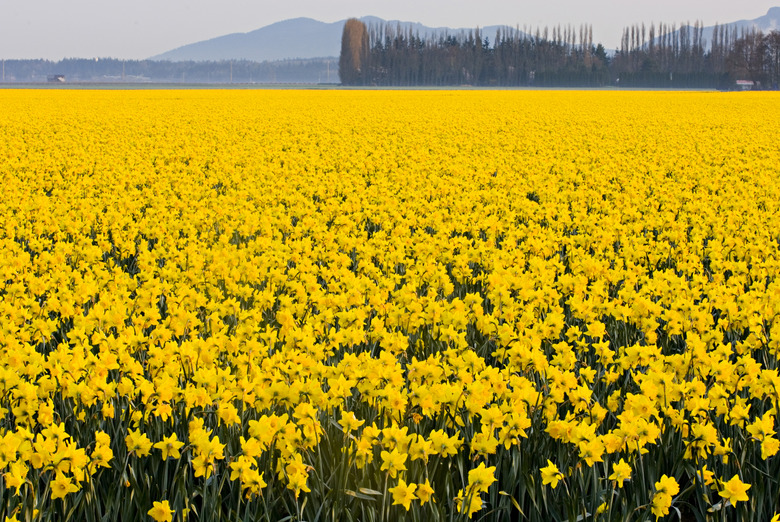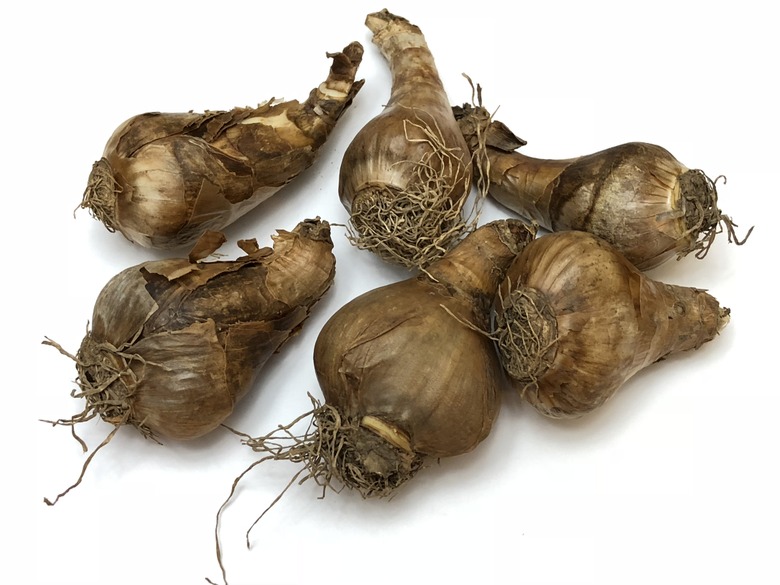Do Daffodil Bulbs Multiply?
Daffodils Multiply Constantly to the Point of Overcrowding
Daffodils (Narcissus spp.) produce new, small bulbs each year. So not only do daffodils multiply, they do so constantly and will eventually become too crowded to bloom.
Daffodils grow best in sunny, well-drained beds within U.S. Department of Agriculture plant hardiness zones 3 to 9, where they spread into the surrounding soil to create colorful drifts of flowers each spring. Daffodils will thrive in the same bed for many years, but they will eventually become overcrowded and need to be lifted and divided to make way for new growth.
Tip
Daffodil bulbs multiply each year and need to be lifted and divided every few years to keep them blooming.
Lifting and Dividing Daffodil Bulbs
Daffodil bulbs need to be lifted and divided when the plants start to bloom less, or the flowers become smaller. This happens to daffodils after 5 to 10 years of growing in the same bed.
Heavy shade and poor soil can also reduce blooming in daffodils. But if the bulbs formerly bloomed well and only started blooming less after several years, then age and overcrowding is probably the cause. Wait until the foliage dies in late summer before lifting and dividing the bulbs.
Stick a gardening fork into the soil a few inches away from the daffodil clump and gently pry the bulbs from the soil. Sort the daffodil bulbs into two piles, with large and medium-sized bulbs in one pile and very small bulbs in another. Don't bother saving the very small bulbs or any large bulbs that look old or damaged.
Spread out the remaining bulbs in a dry, airy place for several weeks to dry before replanting them.
Growing Daffodils From Bulbs
Daffodils should be planted in autumn two to four weeks before the first hard frost. They are not fussy plants and will tolerate any fast-draining soil.
**Clay Soil:** If your soil is clayish, however, amend it to improve its texture, nutrient content and drainage. Work 3 to 4 inches of compost into the top 12 inches of soil a few weeks before planting the bulbs so that the soil has time to settle.
**Planting:** Plant daffodil bulbs 3 to 6 inches part and two to three times as deep as the bulb is tall. For instance, a 2-inch-tall bulb should be planted 4 to 6 inches deep.
**Watering:** Daffodil bulbs typically do not need watering after planting because winter rain and snow provide abundant moisture. The bulbs may need an occasional drink of water, however, if spring is dry and warm.
**Deadheading:** Deadhead the flowers to tidy up the plants, but otherwise do not prune them or remove any foliage for at least six weeks after blooming so that the foliage can create energy for the bulbs.
Do not prune daffodils or remove any foliage for at least six weeks after blooming so that the foliage can create energy for the bulbs.
Growing Daffodils From Seed
Though daffodils are typically grown from bulbs, they do indeed have seeds that can be used to grow new plants. One drawback to growing daffodils from seed is that the new plant may not resemble the original, but it can produce a new daffodil variety that is unique to your garden.
The process of starting daffodil seeds is straightforward but requires patience, as it will take five to six years for the plant to produce a bulb large enough to flower.
Tip
Daffodils grown from seed take up to six years to produce a bulb that is large enough to flower.
Collect seeds from a daffodil once the seed pod splits open to reveal the small black seeds inside. Plant them in a nursery pot or tray filled with moist seed-starting compost. The seeds should be buried no deeper than 1/2 inch, then watch for grasslike sprouts in a few months.
Daffodil seeds take so long to produce bulbs that they don't need to be transplanted into a larger pot for at least three years. Grow the seedlings under nursery conditions until the bulbs finally bloom, then transplant the blooming bulbs into the garden the following autumn.

